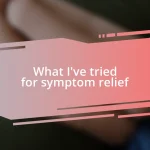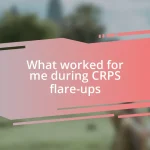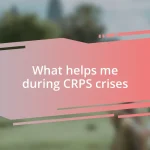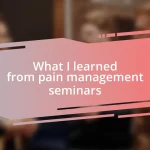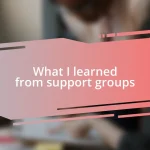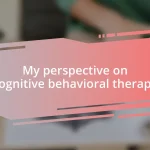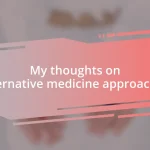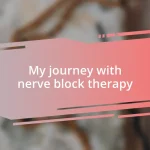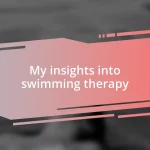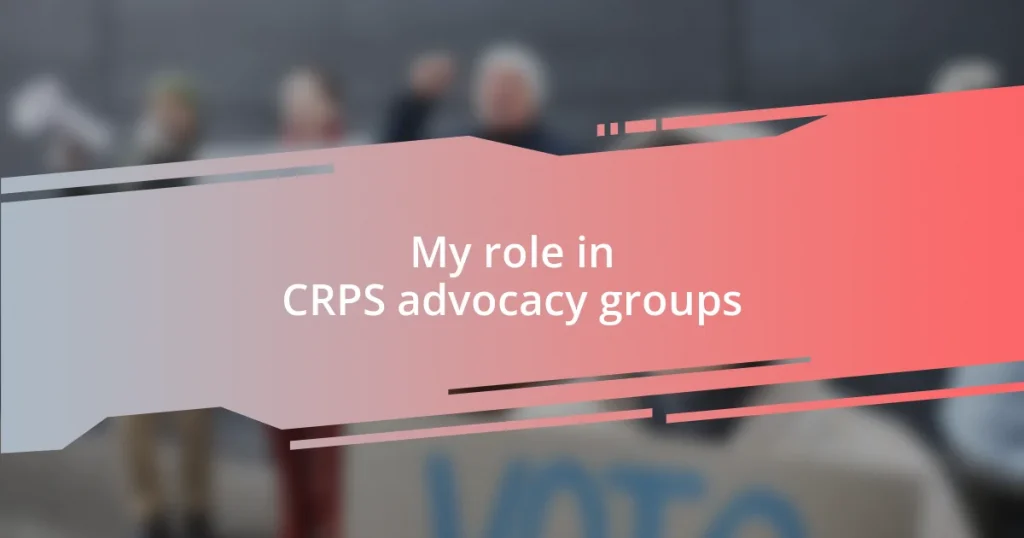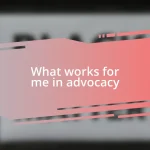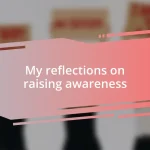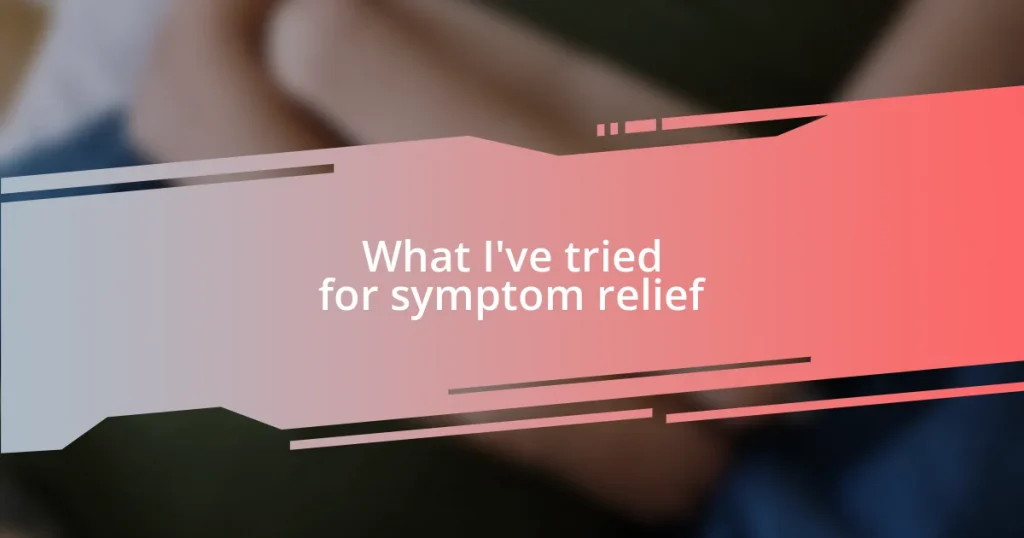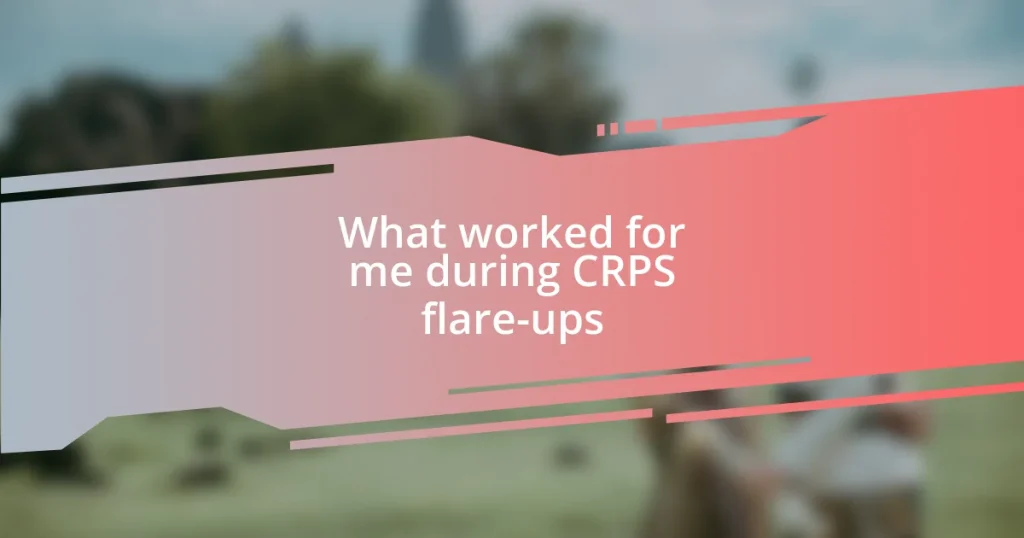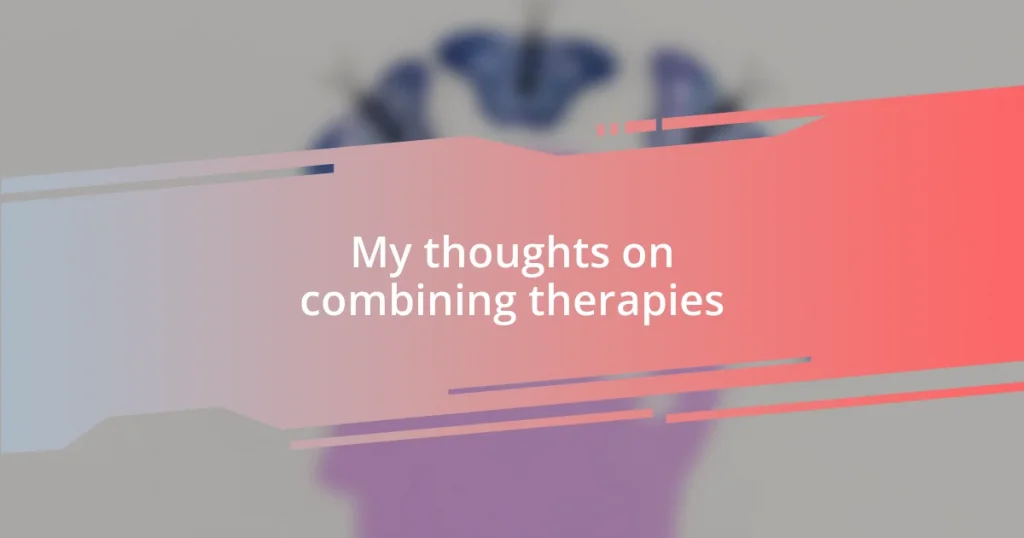Key takeaways:
- Advocacy for CRPS is essential for raising awareness, providing support resources, and securing research funding to improve treatment options.
- Building a supportive network through shared experiences fosters resilience and understanding within the CRPS community.
- Educational initiatives, such as workshops and school programs, play a crucial role in transforming perceptions and fostering empathy towards CRPS sufferers.
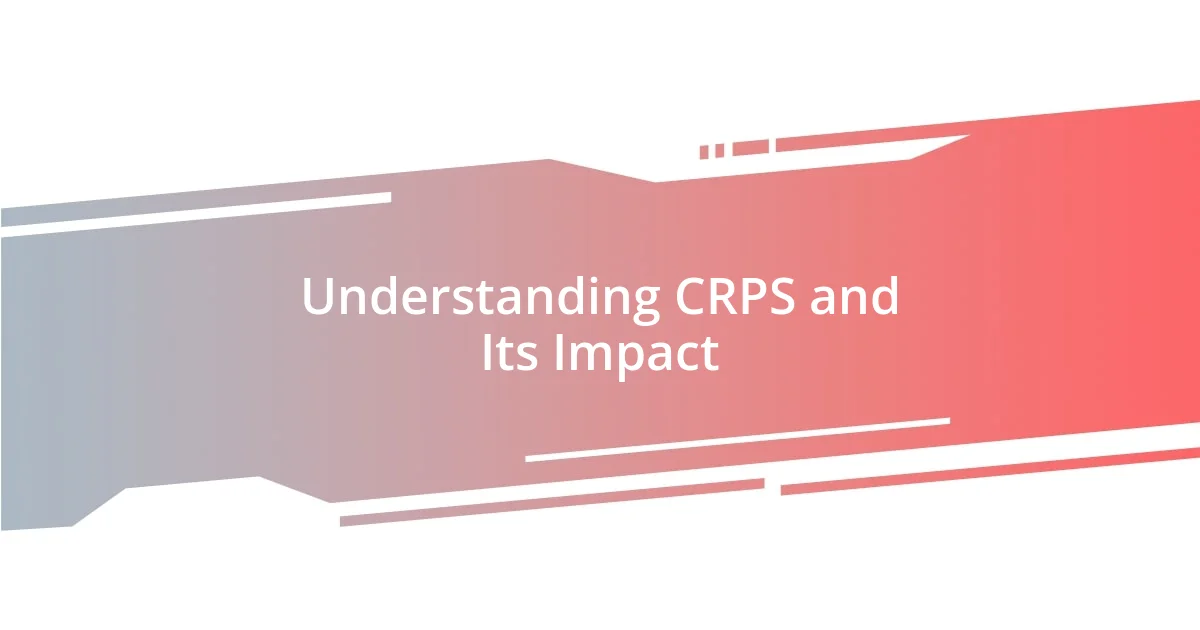
Understanding CRPS and Its Impact
Complex Regional Pain Syndrome (CRPS) is more than just chronic pain; it can feel like living in a constant state of turmoil where even the lightest touch can send shockwaves of agony through the body. I remember a friend of mine who, after an accident, described the mere sensation of her clothes against her skin as torture. Is it any wonder that the emotional toll of such relentless pain can lead individuals into dark places, grappling with feelings of helplessness?
The impact of CRPS extends beyond physical symptoms, affecting mental health, relationships, and daily activities. I once met a mother who struggled to hold her child due to the unbearable sensation in her arms. She shared how isolating it feels when you can’t participate in the simplest joys of motherhood. How do we find a way to connect with those we love when our own body feels like a prison?
Living with CRPS can also create a cycle of frustration and misunderstanding with others, who may not fully grasp the severity of the condition. I’ve seen how friends of mine, unaware of the complexities involved, sometimes dismiss the pain as “just a phase.” It makes me wonder, how do we bridge that gap in understanding, helping others appreciate the real-life consequences of a condition that can seem invisible?
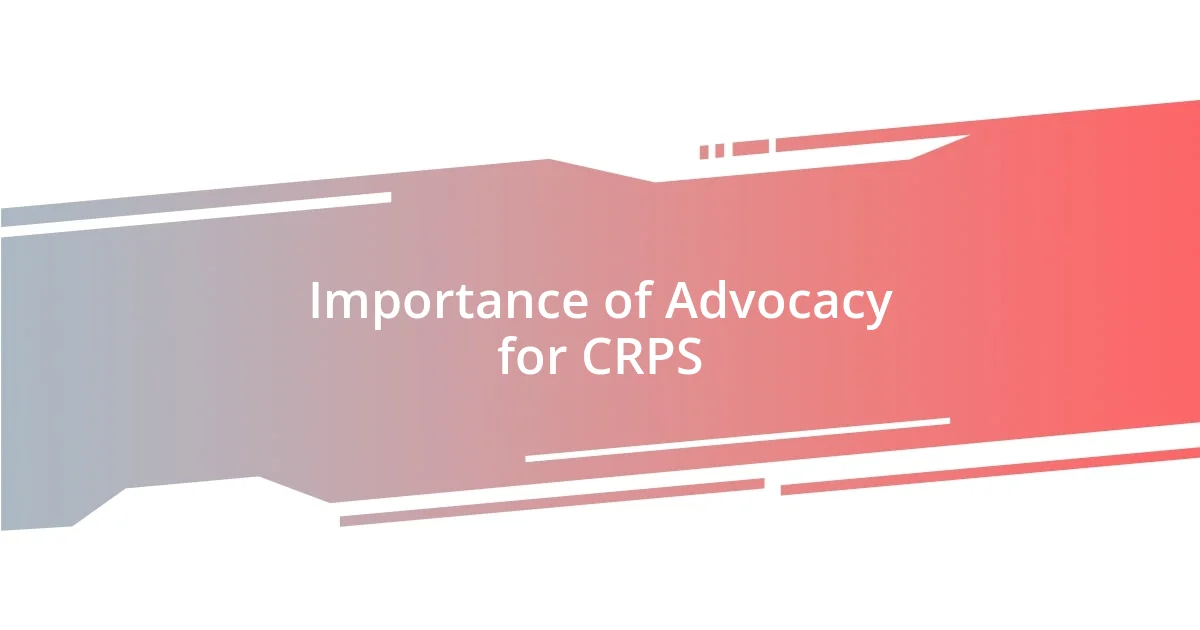
Importance of Advocacy for CRPS
Advocacy for CRPS is crucial in raising awareness and understanding of this often-misunderstood condition. I often think about how advocates work tirelessly to inform the public and medical professionals about CRPS. When I attended a local awareness event, it struck me how many people were shocked to learn that CRPS can lead to such life-altering discomfort and disability. This education fosters empathy, which is essential for creating supportive communities.
Moreover, advocacy groups provide vital resources for individuals navigating the complexities of CRPS. They offer platforms for sharing personal stories and connecting with others who share similar struggles. I recall a support meeting where one woman shared how isolating it felt to cope with her diagnosis alone. It was beautiful to witness how these advocates facilitated a space that allowed individuals to express their feelings, transforming loneliness into a collective sense of understanding and hope.
Finally, advocacy plays a vital role in pushing for better research funding and treatment options. Without the voices of those affected by CRPS, many potential advancements could go unheard. I once spoke to a researcher who admitted that public awareness significantly influences funding decisions in the medical field. How can we expect progress without ensuring that CRPS is on the radar? This ongoing commitment to advocacy can make a real difference in the lives of many suffering from this condition.
| Aspect of Advocacy | Importance |
|---|---|
| Awareness | Helps the public understand CRPS |
| Support Resources | Provides connections and community |
| Research Funding | Encourages improvements in treatment |
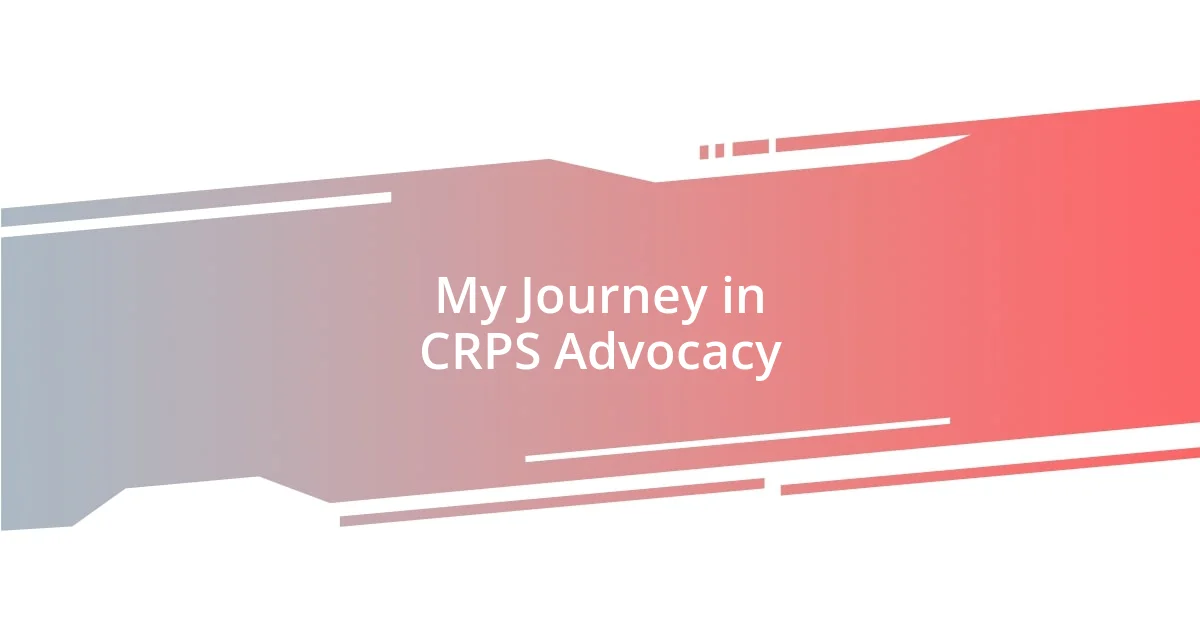
My Journey in CRPS Advocacy
I’ve always felt a deep connection to the CRPS community. My journey in advocacy began after I witnessed a close friend struggle with the condition. Her resilience inspired me to share her story and highlight the daily battles she faced. I vividly recall our late-night conversations where she would question why no one seemed to understand her pain. Those moments ignited a fire in me—an urge to speak out and shed light on CRPS, ensuring that others wouldn’t feel alone in their journey.
Through my experiences, I’ve learned that advocacy isn’t just about raising awareness; it’s about building a supportive network. Here are a few pivotal moments that shaped my path:
- Attending Workshops: The first time I participated in a CRPS workshop, I was overwhelmed by the sense of community. Here were people sharing their stories, their struggles, and their hopes—it felt transformative.
- Developing Educational Resources: Collaborating on materials that explain CRPS to the public opened my eyes to the impact of clear communication. I remember feeling a sense of purpose as I crafted content that could potentially change someone’s understanding of the condition.
- Speaking at Events: When I first stood in front of a crowd to share my friend’s story, my heart raced. But hearing their reactions—tears, nods of understanding—reinforced my commitment to advocacy. It was moments like these that made me realize the profound influence our voices can have.
Each step in this journey reaffirmed my belief that advocating for CRPS is vital, not just for awareness but also for compassion and connection.
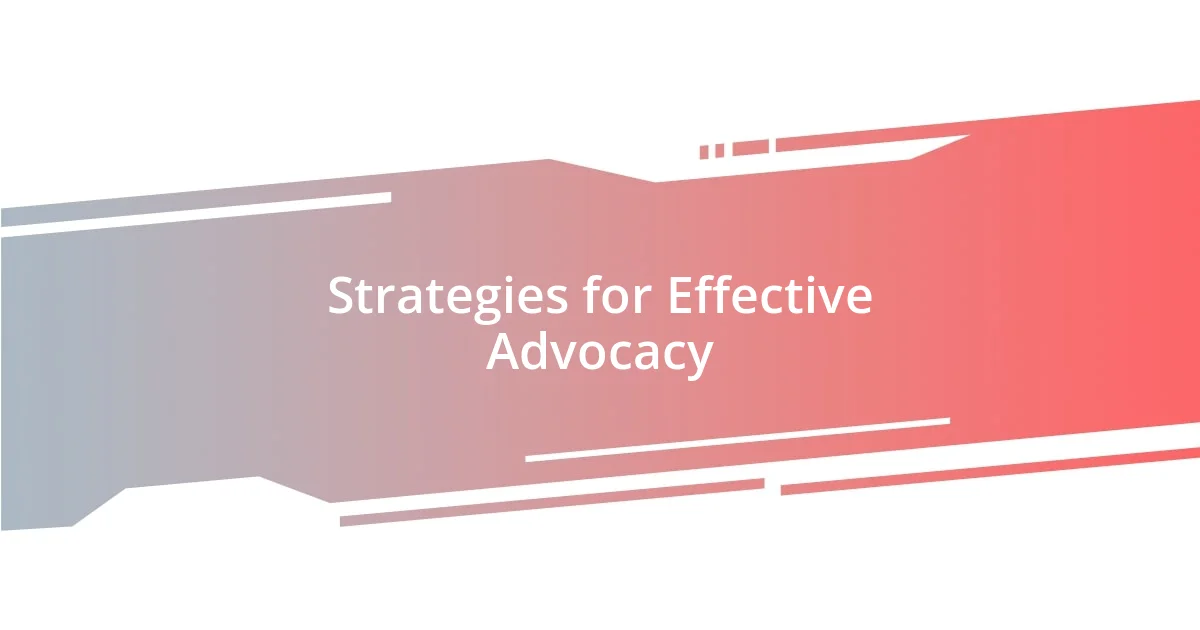
Strategies for Effective Advocacy
Engaging with lawmakers is a key strategy in effective advocacy for CRPS. I remember the first time I drafted a letter to my local representative; I was nervous but determined. Sharing personal stories can be powerful, and I often ask myself, how many people actually put a face to the condition? By personalizing the impact of CRPS, I could illustrate the urgent need for policy changes and funding for research. This approach has a lasting effect, as it drives home the message that behind every statistic is a real person experiencing pain.
Another essential strategy is harnessing social media platforms to spread awareness and connect with a wider audience. I’ve found that creating a dedicated page to share updates and resources has rallied many in our community. It’s amazing to see how a single post can spark conversations; one day, a follower shared her challenges, and the outpouring of support was overwhelming. It made me think, how can we utilize the power of digital storytelling to create a stronger, united front? Social media isn’t just a tool; it’s become a lifeline for people to find support and share their experiences.
Moreover, collaboration with healthcare professionals can amplify advocacy efforts. In my experience, when I reached out to a local pain management clinic, they welcomed the opportunity to host an information session about CRPS. I vividly recall how surprised I was at the amount of interest from both patients and providers. It confirmed for me that building bridges between the community and medical professionals is vital. It leads to better education and understanding, fostering an environment where focused discussions on treatment and research can flourish. Don’t underestimate the impact of these shared experiences; they can lead to real breakthroughs in care and support.
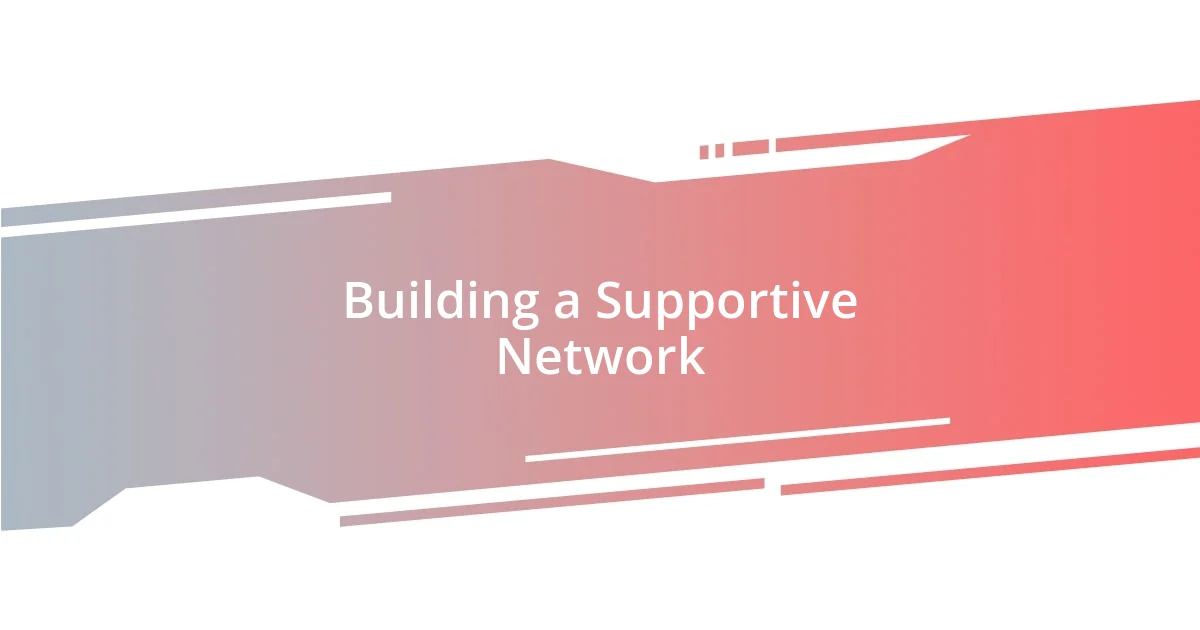
Building a Supportive Network
Building a supportive network is crucial in the world of CRPS advocacy. I remember vividly the first time I connected with others who shared similar experiences; it was like finding a family I never knew I needed. Have you ever felt that instant relief of being understood? It’s a feeling that fuels our fight, reminding us that we’re not alone on this journey.
In my advocacy work, I’ve learned that each story shared enhances our collective strength. During a small group meeting, we sat in a circle, each person taking a turn to speak. As I listened to others recount their struggles, I felt a blend of sadness and hope. Isn’t it fascinating how vulnerability can nurture resilience? This is how we build trust and solidify our network—by creating safe spaces where everyone feels heard and valued.
I often find that the most unexpected connections can lead to significant support. A chance meeting at a health fair with someone who works in pain management sparked an initiative for workshops in our community. Together, we crafted a series of sessions aimed at educating both patients and providers. Can you imagine the ripple effect of such partnerships? By pooling our resources and knowledge, we’re not just raising awareness; we’re actively transforming lives and paving the way toward better understanding and care in the CRPS community.
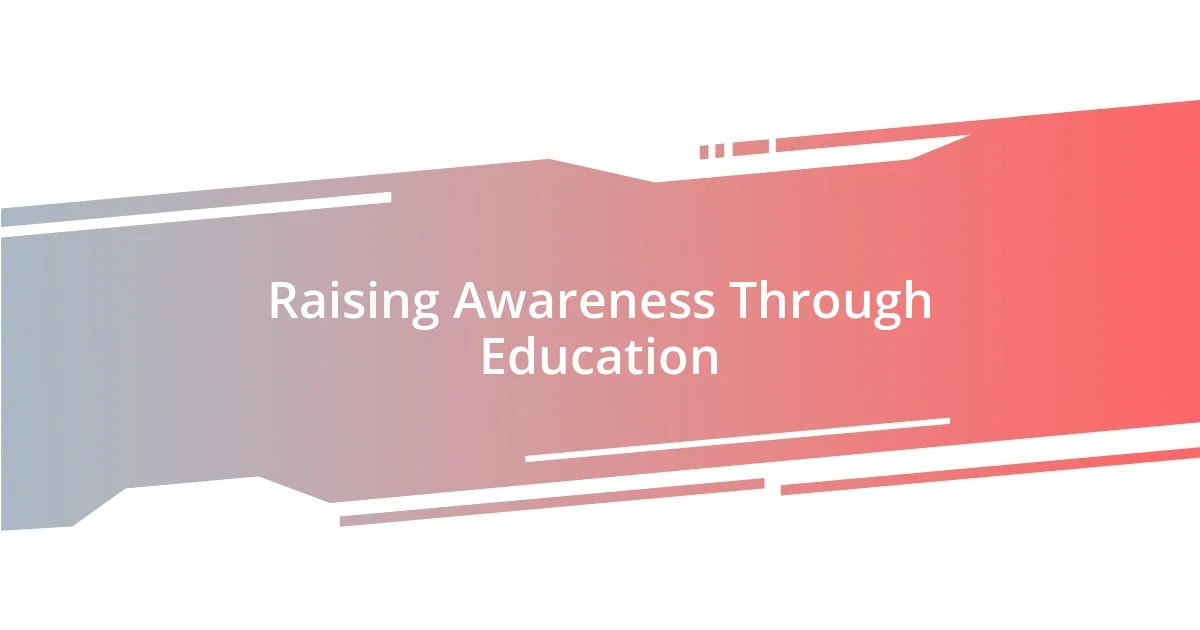
Raising Awareness Through Education
Raising awareness through education is a vital piece of the advocacy puzzle. I recall a workshop I organized at a local community center, where I presented fundamental information about CRPS to a mix of patients, families, and interested professionals. The energy in the room was palpable; people were hungry for knowledge. It made me wonder, when we spread awareness, are we also sowing seeds of understanding and empathy?
I’ve seen firsthand how educational initiatives can transform perceptions. At a recent health expo, I hosted a booth where we distributed brochures and engaged attendees in conversations about CRPS. One interaction stands out: a concerned parent approached me, unsure of how to help her child. Her eyes filled with tears as I shared insights about coping strategies and available resources. I couldn’t help but think, how many more families out there are searching for guidance just like her? It was heartwarming to realize that education can bring clarity and comfort where confusion and frustration often reign.
Moreover, collaborating with schools and local organizations to introduce CRPS educational programs can have a long-lasting impact. I reached out to a nearby high school, and to my delight, they welcomed the idea of hosting a seminar for students to learn about chronic pain conditions. Watching young minds grasp the complexities of CRPS filled me with hope. Isn’t it inspiring to think that these future advocates will carry this knowledge forward, fostering a society more aware and compassionate toward those facing chronic conditions? Through education, we’re not only elevating awareness but building a foundation of understanding that can change lives for the better.
